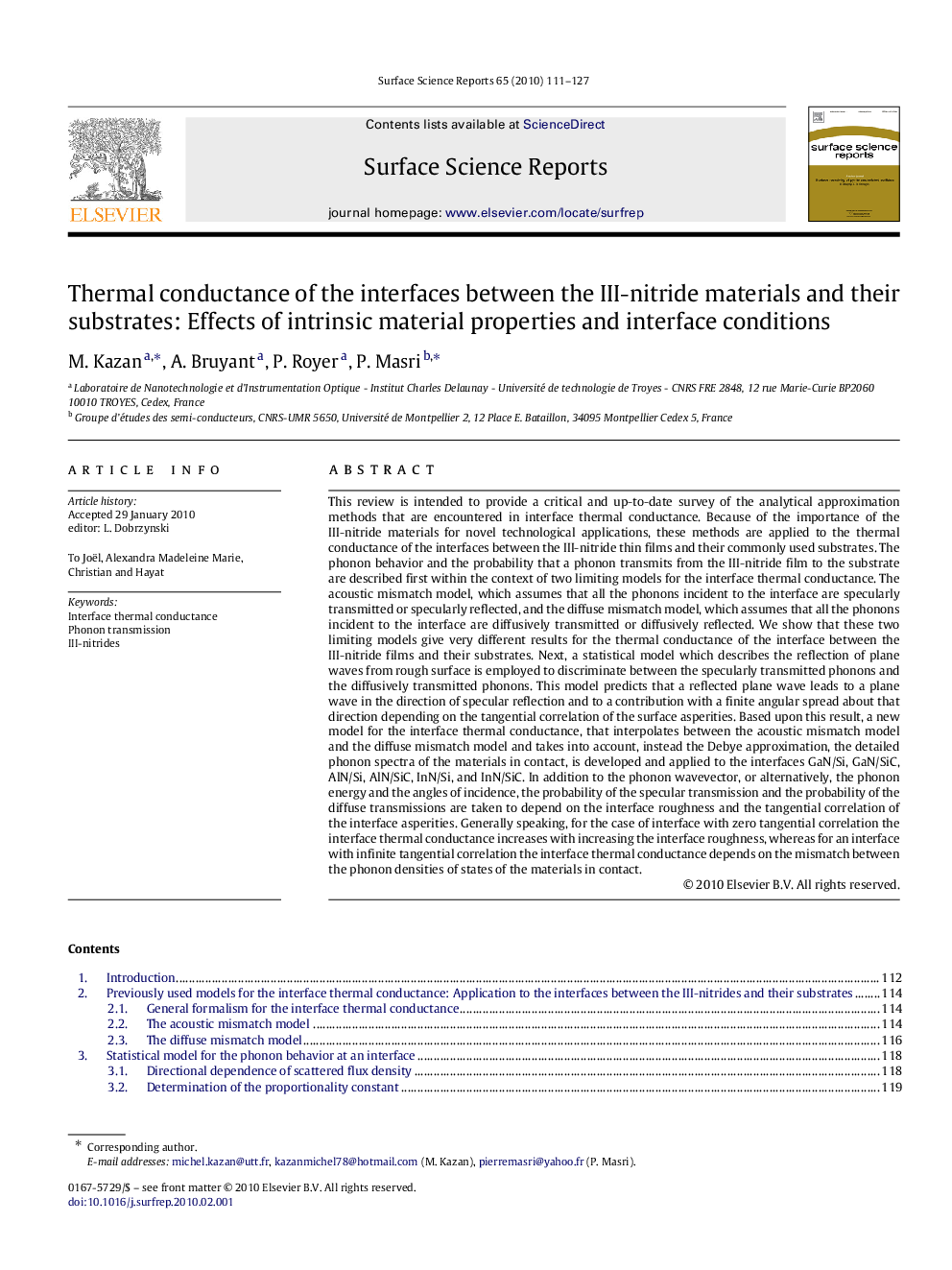| Article ID | Journal | Published Year | Pages | File Type |
|---|---|---|---|---|
| 7845388 | Surface Science Reports | 2010 | 17 Pages |
Abstract
This review is intended to provide a critical and up-to-date survey of the analytical approximation methods that are encountered in interface thermal conductance. Because of the importance of the III-nitride materials for novel technological applications, these methods are applied to the thermal conductance of the interfaces between the III-nitride thin films and their commonly used substrates. The phonon behavior and the probability that a phonon transmits from the III-nitride film to the substrate are described first within the context of two limiting models for the interface thermal conductance. The acoustic mismatch model, which assumes that all the phonons incident to the interface are specularly transmitted or specularly reflected, and the diffuse mismatch model, which assumes that all the phonons incident to the interface are diffusively transmitted or diffusively reflected. We show that these two limiting models give very different results for the thermal conductance of the interface between the III-nitride films and their substrates. Next, a statistical model which describes the reflection of plane waves from rough surface is employed to discriminate between the specularly transmitted phonons and the diffusively transmitted phonons. This model predicts that a reflected plane wave leads to a plane wave in the direction of specular reflection and to a contribution with a finite angular spread about that direction depending on the tangential correlation of the surface asperities. Based upon this result, a new model for the interface thermal conductance, that interpolates between the acoustic mismatch model and the diffuse mismatch model and takes into account, instead the Debye approximation, the detailed phonon spectra of the materials in contact, is developed and applied to the interfaces GaN/Si, GaN/SiC, AlN/Si, AlN/SiC, InN/Si, and InN/SiC. In addition to the phonon wavevector, or alternatively, the phonon energy and the angles of incidence, the probability of the specular transmission and the probability of the diffuse transmissions are taken to depend on the interface roughness and the tangential correlation of the interface asperities. Generally speaking, for the case of interface with zero tangential correlation the interface thermal conductance increases with increasing the interface roughness, whereas for an interface with infinite tangential correlation the interface thermal conductance depends on the mismatch between the phonon densities of states of the materials in contact.
Related Topics
Physical Sciences and Engineering
Chemistry
Physical and Theoretical Chemistry
Authors
M. Kazan, A. Bruyant, P. Royer, P. Masri,
